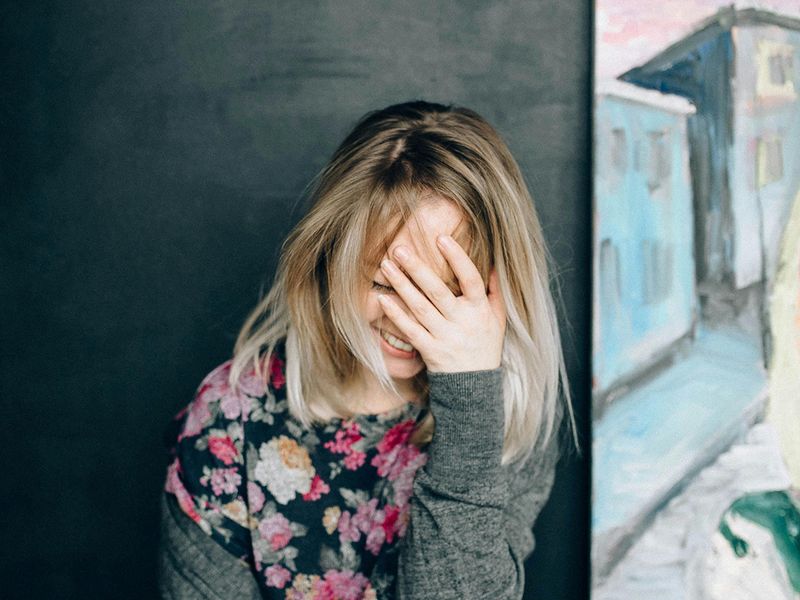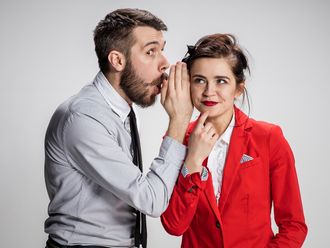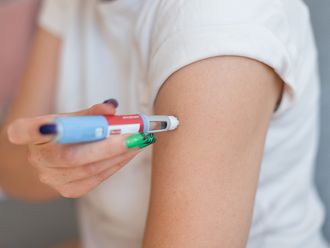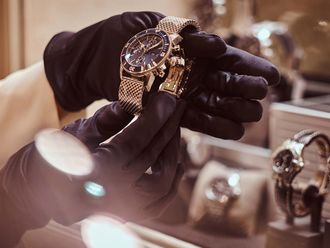
Abu Dhabi-based Soumya Singh, a homemaker, wears her heart on her sleeve — literally. Her cheeks speak before she does, by turning hot and red, as she admits. She says, “I have a round face, so whenever I blush, everyone calls it cute. I just find this habit really annoying.” Her face burns when she receives a compliment in public and everyone cheers with ‘awww’. Even a minor mishap like spilling tea at her own wedding resulted in a flaming visage and a chorus of ‘adorable’. It doesn’t help that there is always that one helpful person who points out, “Oh look at her face!”
While Singh’s blush is a ‘full-fledged performance’, others can have slightly different reactions. Dubai-based Rebecca Gregory, an American entrepreneur instinctively tries to hide her flushed ears in such situations. Clearly, praise, awkwardness, and sudden attention can also spark the reddish glow.
‘The most peculiar and most human of all expressions of all time’
A rather curious phenomenon, blushing is involuntary and uncontrollable. It’s still rather perplexing, in fact, our understanding of blushing remains as elusive today as it was in Charles Darwin’s time. The 19th century naturalist famously described it as ‘the most peculiar and most human of all expressions’ in his work, The Expression of the Emotions in Man and Animals.
So, what's really going on beneath that rosy glow? Belkeis Altareb, a psychologist based at Dubai’s Nafsology Psychology Center explains that when strong emotions crank up the dial, there is a rush of adrenaline. “Blushing is a natural, physiological response, that occurs when adrenaline is released due to feelings such as being embarrassed, ashamed, watched, or excited,” she says. So, when a person faces physical challenges or threats, the body prepares physiologically for this fight-or-flight response with an increased blood flow. The blood vessels in the facial region are more prominent and closer to the skin's surface than in other parts of the body. Consequently, when blood flow increases, the resulting redness is more noticeable, she adds. “It is completely normal, with each person having different experiences based on their sensitivity to such emotions.”

Blushing is a natural, physiological response, that occurs when adrenaline is released due to feelings such as being embarrassed, ashamed or excited. So, when a person faces physical challenges or threats, the body prepares physiologically for this fight-or-flight response with an increased blood flow....
Yet, beyond physiological reactions, blushing can even become a self-fulfilling prophecy. Lauren Davis, a psychologist shuttling between the UK and Dubai, explains that anxiety about blushing can trigger a cycle: Increased anxiety leads to more blushing, which in turn intensifies anxiety. Don’t try to hold it back: You’ll blush more. In fact, a 2009 study published in the US-based National Library of Medicine pointed out that simply being told that one is blushing, can induce the very reaction itself.
‘Blushing serves a variety of messages’

Unfortunately for the frazzled blushers, you can’t control it.
British psychologist Ray Crozier tried to make more sense of this phenomenon in his book, The Puzzle of Blushing. As he noticed, it is a visible change in our most conspicuous feature. Yet, it occurs when we least want it, he says, and it draws attention to our behaviour. “We redden when we make a mistake, but also when we are praised or thanked. A blush is involuntary and uncontrollable — an actor might simulate a smile, laughter or a frown, but not a blush.”
As he and other psychologists point out, it’s a message that a person might not consciously choose to send. Davis notes, “It has a variety of meanings, ranging from ‘how dare you’ when angry as someone has crossed a line with you, to just being attracted to another person. It is also a particularly nuanced human phenomenon; the answers as to why a person does so, are not always straightforward.”
Furthermore, a person usually blushes, when they feel as if they’re at the centre of attention, explains Davis. This mind-body connection was demonstrated in a 2004 US-based study published in the National Library of Medicine, where participants were asked to sing while being observed from one side of the face. Researchers discovered that blood flow increased specifically on the cheek under scrutiny, highlighting the role of social awareness in blushing.
Even shame and inferiority can trigger a blush, she adds. “A touchy subject can ignite a flush, even if you're just a bystander. Feeling out of place or overshadowed can also turn up the heat on your cheeks,” she says.
‘An honest response’

Emotions are spotlights, and shame is a blinding one. While most emotions urge us inward, shame thrusts us into the spotlight. It's a desire to disappear, yet our faces betray us. Blushing, explains Davis, is a social signal, which announces regret or embarrassment. This involuntary reaction forces us to confront others' perceptions, a painful process that can ultimately lead to growth, repair, and stronger relationships.
It’s like an internal polygraph. Davis explains, “It can be a surprising social asset. People are more inclined to forgive and trust someone who blushes after making a mistake, as it is such an involuntary reaction. It cannot be controlled or manipulated; it’s a nonverbal cue that transcends cultural and linguistic barriers, making it a reliable indicator of what’s really going on inside.”
She cites a 2019 UK-based study published in the academic journal, Cognition and Emotion, which showed that people are more likely to forgive someone who blushes, when they do something wrong and are more likely to trust them with money. So, when we commit a mistake and blush, people see us as more trustworthy and more pro-social, she explains. Moving beyond a mere emotional response, blushing has also evolved as a nonverbal apology. When we commit a mistake, the flush that creeps onto our cheeks serves as a visual acknowledgment of our mistake. “It's a silent signal that we recognise our blunder and are remorseful,” she says.
As it is involuntary, blushing offers a glimpse into a person's genuine emotional experience. Davis adds, “It can reveal emotions that someone might be consciously trying to conceal.” There’s a sense of transparency around blushing as Belkeis Altareb, a psychologist based at Dubai’s Nafsology Psychology Center and Davis add. It can signal vulnerability, humility, or a desire for social connection. Such transparency builds trust and rapport. “It is a raw, unfiltered expression of internal emotional states, making it a potent and honest form of communication,” says Davis.
However, if you would still like to evade the discomfort of blushing: You could try taking a few deep breaths, suggest the experts. This helps calm your nervous system and reduce blood flow to your face. You could even try smiling, which helps reducing the redness. Try focusing on something else for a distraction.










